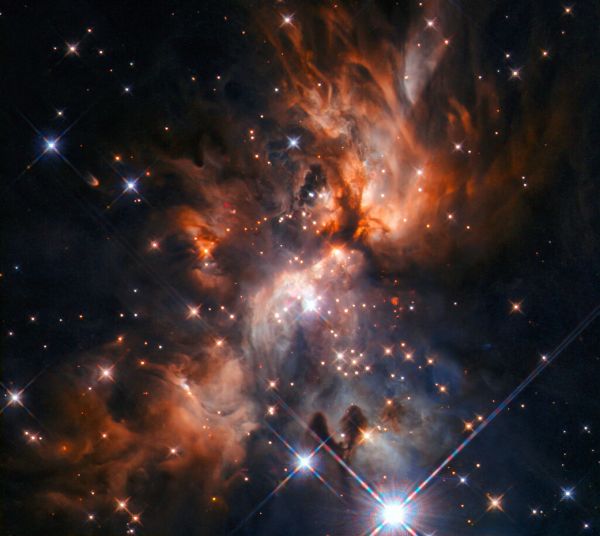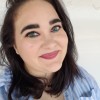Hubble telescope spies a stellar nursery through clouds in stunning image
In a beautiful image from Hubble, young stars can be seen peeking through a dense cloud of dust.

New stars are born! NASA's Hubble Space Telescope has captured a new image of bright, baby stars peeking out of a "stellar nursery" — a cloud of dust where stars are born.
This spectacular stellar nursery lies in the constellation of Gemini, NASA said in a statement. Officially called AFGL 5180, the nursery is one of many star-forming regions, which have the right density of dust and gas for that material to eventually collapse in on itself and form a star.
Although the surrounding dust "makes for a spectacular image," according to NASA, it also obscures new star growth from astronomers.
Related: The best Hubble Space Telescope images of all time!
In the new image, released on Aug. 13, a massive star is forming in the middle and making it possible to see through the clouds, thanks to its stellar light. The beams of light illuminate cavities in the dust clouds.
"Light from this star is mostly escaping and reaching us by illuminating these cavities, like a lighthouse piercing through the storm clouds," NASA said.
Hubble's Wide Field Camera 3 (WFC3) was specifically designed to capture images like this one, because it can detect both visible and infrared light. Thanks to Hubble, astronomers can now see young stars much more clearly. Scientists hope that understanding star formation will teach us more about our own solar system.
Get the world’s most fascinating discoveries delivered straight to your inbox.
Follow Kasandra Brabaw on Twitter @KassieBrabaw. Follow us on Twitter @Spacedotcom and on Facebook.

Kasandra Brabaw is a freelance science writer who covers space, health and psychology. She has a bachelor's degree in science and a bachelor's degree of arts from the University of Syracuse; she completed her master's of arts degree in journalism at Syracuse University in 2014. In addition to writing for Live Science and our sister site Space.com, Kasandra has written for Prevention, Women's Health, SELF and other health publications. She has also worked with academics to edit books written for popular audiences.
 Live Science Plus
Live Science Plus






